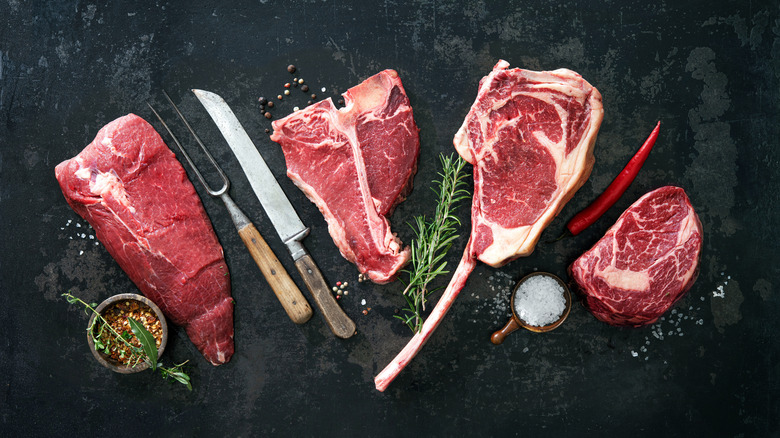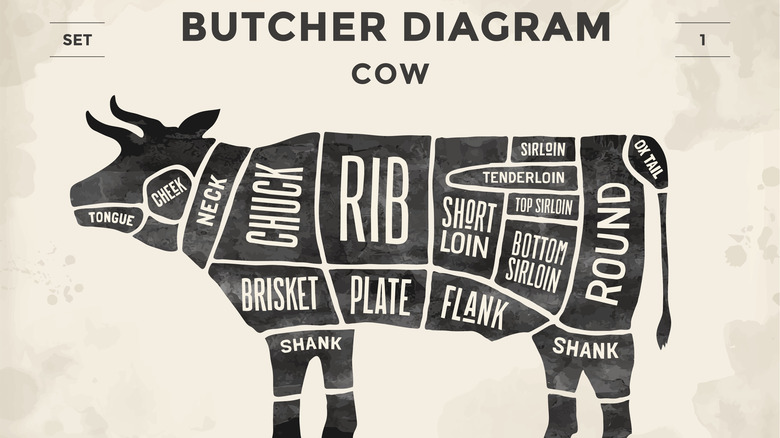The Difference Between Primal And Portion Beef Cuts
Unless you happen to be a butcher, you are likely unfamiliar with the intricate work that goes into turning cattle into the meat we see at the grocery store. Beef cattle are large animals, averaging a live weight of around 1,400 pounds. In order to transform that huge carcass into steaks and roasts, the butcher needs to divide it into the eight main cuts of beef, also known as the primal cuts.
The primal cuts are enormous, rough slabs of meat that coincide with the sections on a classic butcher's diagram. The primal cuts of beef are as follows — chuck, rib, loin, round, flank, short plate, brisket, and shank. On their own, these primal cuts are unrefined, for the beef that lies within has not been parceled out yet. Butchers will take these primal cuts and divide them into sub-primal cuts. At this point, the beef is ready for its final stage of processing. However, before any meat can be packaged and presented to the waiting public, it needs to be portion cut.
From primal to portion
Portion cuts are really nothing more than the sub-primal cuts that have been trimmed and dressed up. The resulting meat cuts are far too varied to list in completion. To provide you with a general idea, however, we'll give you some of the portioned cuts you are most likely to find in the grocery store. The chuck is the largest of the primal cuts, which can be portioned down into ground beef, flat iron steak, chuck stew meat, shoulder roast, and chuck short ribs. From the rib primal will come ribeye steak, ribeye roast, and prime rib. While the flank portion will give you hangar and skirt steak.
Then there's the loin that provides some of the most iconic and familiar of all beef cuts, like sirloin, NY strip, T-bone, porterhouse, and filet mignon. So, while they all come from the same cow, the difference between primal cuts and portioned cuts is that one is the refined version of the other. Think of it like sculpting but with beef. You have this enormous slab of meat that is taken by a butcher and transformed into these beautiful cuts. Though it's not considered an art form, it certainly should be.

